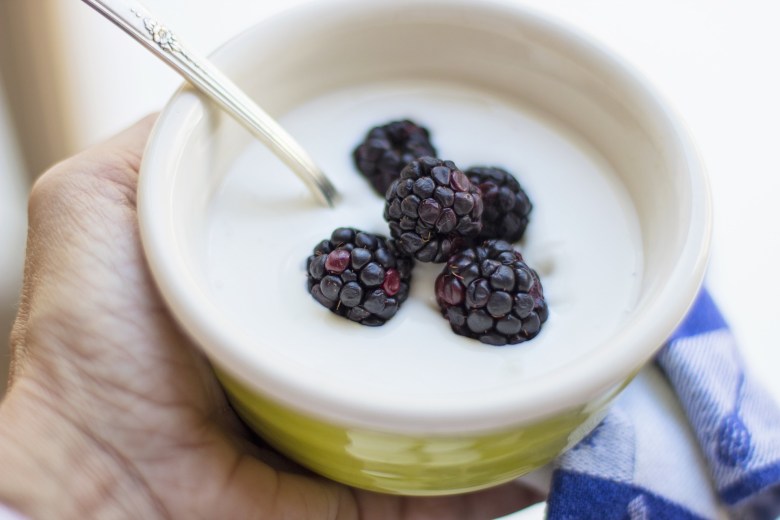We love yogurts in the UK. Every year, we spend a staggering 1.7 billion on the white stuff, with more people opting for low-fat and fat-free varieties in an effort to watch their waistlines.
But are these ‘healthy’ yogurts actually helping you cut the calories? You may be surprised…
How much sugar is in low-fat and fat-free yogurts?
Before we begin, let’s get one thing straight: any product which contains milk will have some sugar content. That’s because milk contains lactose, and lactose has naturally occurring sugars. As such, any yogurt has around 2 per cent sugar per 100g as its baseline. Any sugar that then gets added to the yogurt compounds on top of this 2 per cent.

Now that’s cleared up, we can take a deeper dive into the sugars in low-fat and fat-free yogurts.
Many seemingly ‘healthy’ yogurts are crammed with what are called ‘free sugars’ (this is just a fancy way of saying ‘added sugar’, of which is not contributed to by lactose). This is because yogurt gets its gorgeous thick texture and full-bodied flavour from its natural fat content. When this is stripped out, something needs to be added to give that flavour punch back to the product. Enter: sugar and sweeteners.
Some of the most popular high sugar additives to fat-free and low-fat yogurts include fructose, dextrose, glucose, fructose syrup, and honey, just to name a few. Typically, about 1 gram of sugar is added for every 1 to 2 grams of fat removed.
That’s huge.
To put it into perspective, let’s look at Onken, a leading brand of fat-free yogurts. Their fat-free strawberry yogurt might be a bio-pot (which we know is great for the gut), but a closer look at the nutritional info shows us the health benefits are counteracted by copious amounts of sugar.
Related: The Difference Between Greek & Greek Style Yogurt
Per 150g of this pot serves up a whopping 20g sugar (that’s 5 teaspoons of sugar!) Then, if you ate the whole pot, you’d be looking at 60g sugar. That’s around 60-70 per cent of your RDI (Recommended Daily Intake) of sugar – and that’s just in one pot of ‘healthy’ fat-free yogurt. Surprising, right?
Top tip: If your yogurt doesn’t have a traffic light labelling on the packaging, look at the RDI amounts on the back. You’ll find sugar content either labelled as ‘sugar’ or within the carbohydrate section as ‘of which sugars’.
Alas, if you want a fat-free or low-fat yogurt that has less sugar but still has huge helpings of flavour, try Liberte. Their fat-free yogurt is thick, creamy and super sweet, thanks to the generous amount of compote at the bottom of the pot.
How much fat is in low-fat and fat-free yogurts?
No, this isn’t a trick question. Most fat-free yogurts actually do contain some fat.
In fact, any yogurt labelled ‘non-fat’ or ‘fat-free’ must contain less than 0.15g fat per 100g. This means a yogurt can contain some fat and still call itself fat-free. Elsewhere, low-fat yogurt must contain less than 3g of fat per 100g, which is quite a steep rise from its fat-free counterpart.
Related: What is Quark? And how is it different from Yogurt?
But before you get dissuaded by fat, remember that, when fat gets removed from anything which needs fat (like yogurt, or any dairy for that matter) other good bits get sucked out with it. In this instance, much of the yogurt’s calcium and protein content is stripped away, leaving you with a pot of empty calories.
So, while a low-fat or fat-free yogurt will contain some calcium and protein, it won’t be nearly as much as a full fat natural set yogurt, like a Fage or a Liberte. One of the best is something like Skyr which is a great compromise between low fat, high protein and low sugar in a thick yogurt.
Top tip: Thin yogurts (like Greek-style types) are usually thin because they have been over-processed or haven’t been given enough time to set. This means the nutrients which need to ferment don’t have time to grow. You get an inferior, and harder to digest, yogurt as a result.

